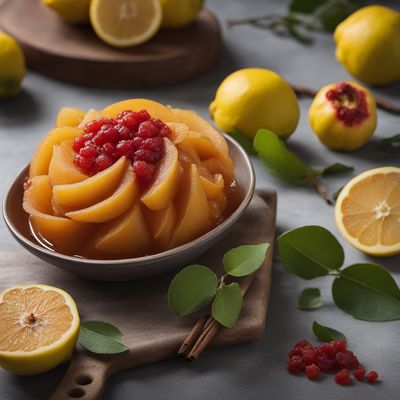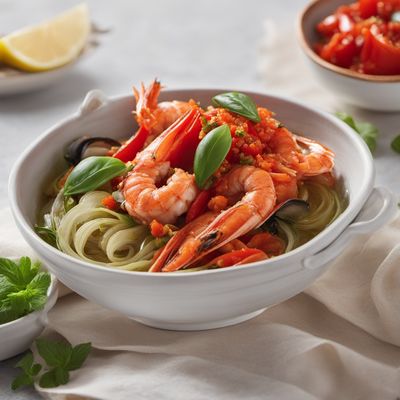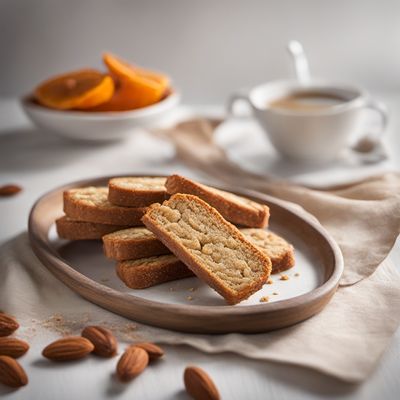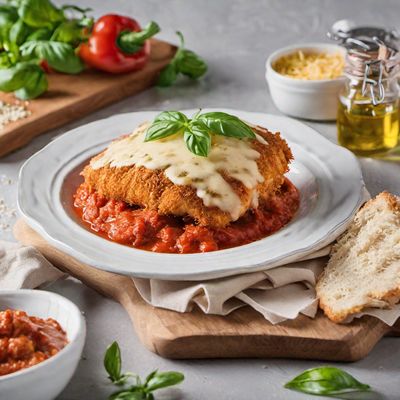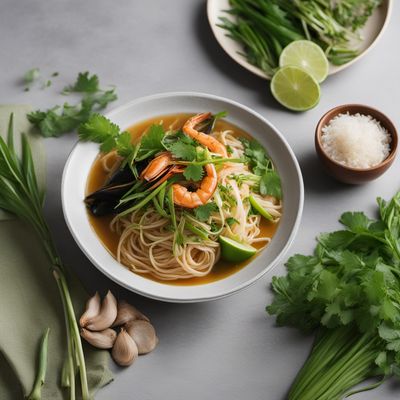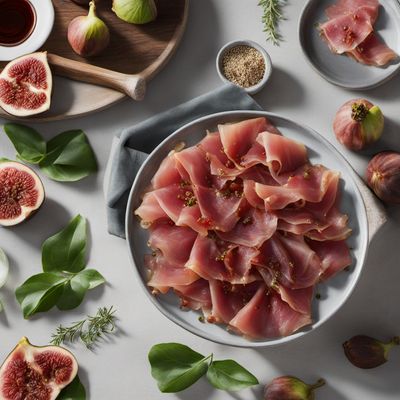
Recipe
Quince Paste with a Twist
Atlantic Island Quince Delight
4.4 out of 5
Indulge in the flavors of the Islands of the North Atlantic with this delightful twist on the traditional Spanish Quince Paste. This recipe combines the sweetness of quince with the unique flavors of the Atlantic Islands, resulting in a delectable treat that will transport you to the shores of these enchanting islands.
Metadata
Preparation time
30 minutes
Cooking time
1 hour 30 minutes
Total time
2 hours
Yields
8 servings
Preparation difficulty
Medium
Suitable for
Vegetarian, Vegan, Gluten-free, Dairy-free, Nut-free
Allergens
N/A
Not suitable for
Paleo, Keto, Low-carb, High-protein, Low-fat
Ingredients
This adaptation of the traditional Spanish Quince Paste incorporates the unique flavors and ingredients found in the cuisines of the Islands of the North Atlantic. The addition of sea salt enhances the taste profile, providing a subtle savory note that complements the sweetness of the quince. The use of local honey adds a touch of floral sweetness, reminiscent of the wildflowers found on the Atlantic Islands. These modifications create a distinct flavor profile that celebrates the culinary traditions of the region. We alse have the original recipe for Quince Paste, so you can check it out.
-
4 large quinces, peeled, cored, and diced (900g / 2 lbs) 4 large quinces, peeled, cored, and diced (900g / 2 lbs)
-
2 cups (400g) granulated sugar 2 cups (400g) granulated sugar
-
1 cup (240ml) water 1 cup (240ml) water
-
1 tablespoon lemon juice 1 tablespoon lemon juice
-
1 teaspoon sea salt 1 teaspoon sea salt
-
2 tablespoons local honey 2 tablespoons local honey
Nutrition
- Calories (kcal / KJ): 120 kcal / 502 KJ
- Fat (total, saturated): 0g, 0g
- Carbohydrates (total, sugars): 31g, 25g
- Protein: 0g
- Fiber: 2g
- Salt: 0.6g
Preparation
-
1.In a large saucepan, combine the diced quinces, sugar, water, lemon juice, and sea salt.
-
2.Bring the mixture to a boil over medium heat, stirring occasionally to dissolve the sugar.
-
3.Reduce the heat to low and simmer for about 1 hour, or until the quinces are soft and the mixture has thickened.
-
4.Remove from heat and let the mixture cool slightly.
-
5.Transfer the mixture to a blender or food processor and blend until smooth.
-
6.Return the mixture to the saucepan and stir in the honey.
-
7.Cook over low heat for an additional 30 minutes, stirring occasionally, until the paste has thickened to a spreadable consistency.
-
8.Remove from heat and let it cool completely.
-
9.Once cooled, transfer the quince paste to airtight containers and refrigerate for at least 24 hours before serving.
Treat your ingredients with care...
- Quinces — Choose ripe quinces that are fragrant and have a golden-yellow color. If you can't find fresh quinces, you can use quince paste or jelly as a substitute.
- Sea salt — Opt for a high-quality sea salt to enhance the flavors of the quince paste.
Tips & Tricks
- To test if the quince paste is ready, place a small amount on a chilled plate. If it holds its shape and doesn't spread, it's done.
- For a more intense flavor, you can add a pinch of cinnamon or a splash of rum during the cooking process.
- Serve the quince paste with a variety of cheeses, such as Manchego or goat cheese, for a delightful pairing.
Serving advice
Slice the quince paste into thin wedges and serve on a cheese board or as a sweet accompaniment to a charcuterie platter. It also makes a delicious spread for toast or crackers.
Presentation advice
Arrange the quince paste slices on a wooden board or a decorative plate. Garnish with fresh herbs or edible flowers to add a touch of elegance to your presentation.
More recipes...
For Quince Paste
For Spanish cuisine » Browse all
For Cuisines of the [[Islands of the North Atlantic]] (IONA) » Browse all
More Spanish cuisine dishes » Browse all

Paparajotes
Paparajotes is a traditional Spanish dessert that is popular in the region of Murcia. It is a simple and delicious dessert that is perfect for any...

Cubanitos
Cubanitos are a popular Cuban snack that are made from puff pastry and filled with a sweet or savory filling. These small, bite-sized pastries are...
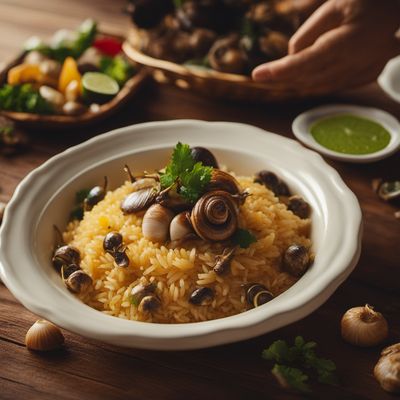
Arroz con conejo y caracoles
Rice with Rabbit and Snails
Arroz con conejo y caracoles is a traditional Spanish dish that is typically eaten in the spring and summer months. It is a hearty, flavorful dish...
